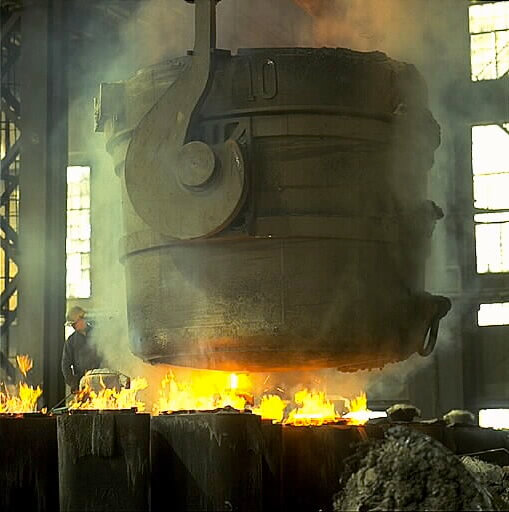What is annealing process? Information on annealing process for glass, metals, benefits and methods.
Annealing: is a heat-treating process that is applied to glass, metals, and alloys to obtain desirable properties in the material.
Glass:
Strains arise in glass during processing because there are temperature inequalities in the molds and nonuniform cooling rates in the unequal thicknesses of glass sections. When room temperature is reached, the last portions to cool are in tension and the first portions to cool are in compression. Because the strains may adversely affect the glass properties, they are eliminated by heating the glass to a temperature of about 1000° F (538° C), followed by controlled cooling until a temperature of about 100° F (38° C) is reached. When the glass is at high temperatures, its viscosity is lowered, and its atoms can move freely to assume strain-free positions. Slow cooling from the maximum temperature prevents the re-introduction of strains.
Metals:
When most metallic substances are deformed at room temperature, they become harder and stronger and tend to get brittle. This behavior can be demonstrated by bending a piece of coat-hanger wire. As it is bent back and forth, each bend becomes a little more difficult, and eventually the wire breaks. The properties existing before bending can be restored by heating the wire to a suitable temperature for a suitable time. In the case of the coat hanger, heating for a few minutes in a soldering-torch flame will accomplish the result. The bending operation is an example of cold working, and the heating operation is called annealing. Annealing of cold-worked materials tends to undo the effects of cold work by restoring softness and ductility.
Annealing is important where the shape of the material must be radically changed, as in forming cups from sheet brass. The partially formed cup is annealed periodically so that additional shaping can be accomplished without tearing the brass. In addition, annealing of cold-worked metal brings about recrystallization of the deformed grains and relieves internal stresses and strains. These changes bring an improvement in the electrical conductivity of the metal.

Source : wikipedia.org
Annealing also is used for cast metals to homogenize the mass and relieve solidification and cooling strains. The distribution of alloying elements in casting often is not uniform. Annealing increases atom mobility and permits redistribution of the various kinds of atoms in an alloy so that homogeneity is attained. At the same time, internal strains are relieved.
Full annealing of steel involves heating the steel to a high enough temperature so that a face-centered-cubic (FCC) structure is attained. The alloy then is cooled slowly to permit maximum development of the body-centered-cubic (BCC) structure. This achieves maximum softness in the steel.
Annealing also is used for age-hardenable alloys to prepare the alloy for subsequent hardening treatments. It is used for zinc die castings to stabilize the dimensions of the casting. White cast iron is converted to malleable cast iron by an annealing treatment.
The easiest way to follow the progress of annealing is to check the hardness of the material. The temperatures and times used for annealing are inversely related. In general, the higher the melting temperature of the metal or alloy, the higher is the annealing temperature.